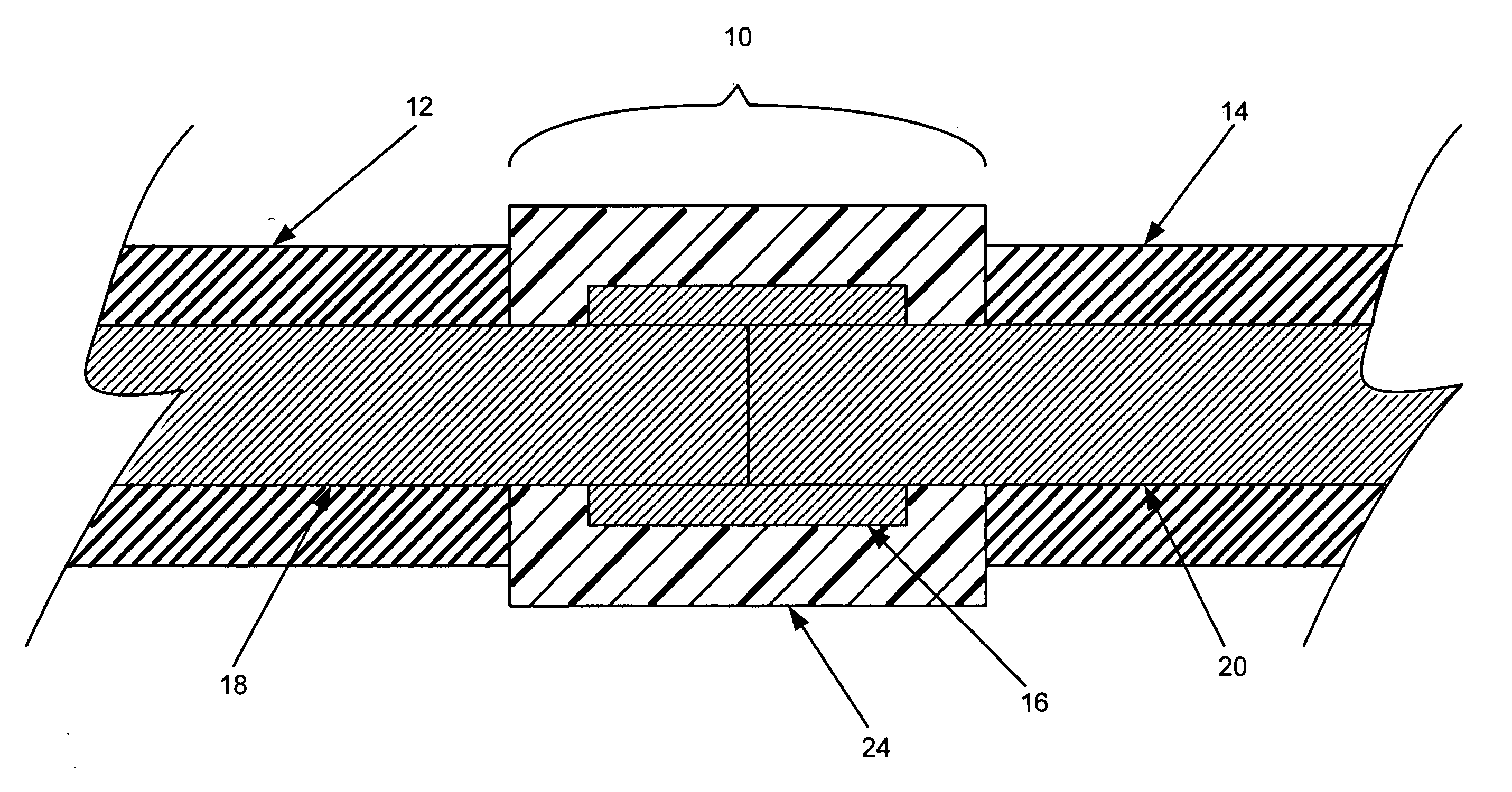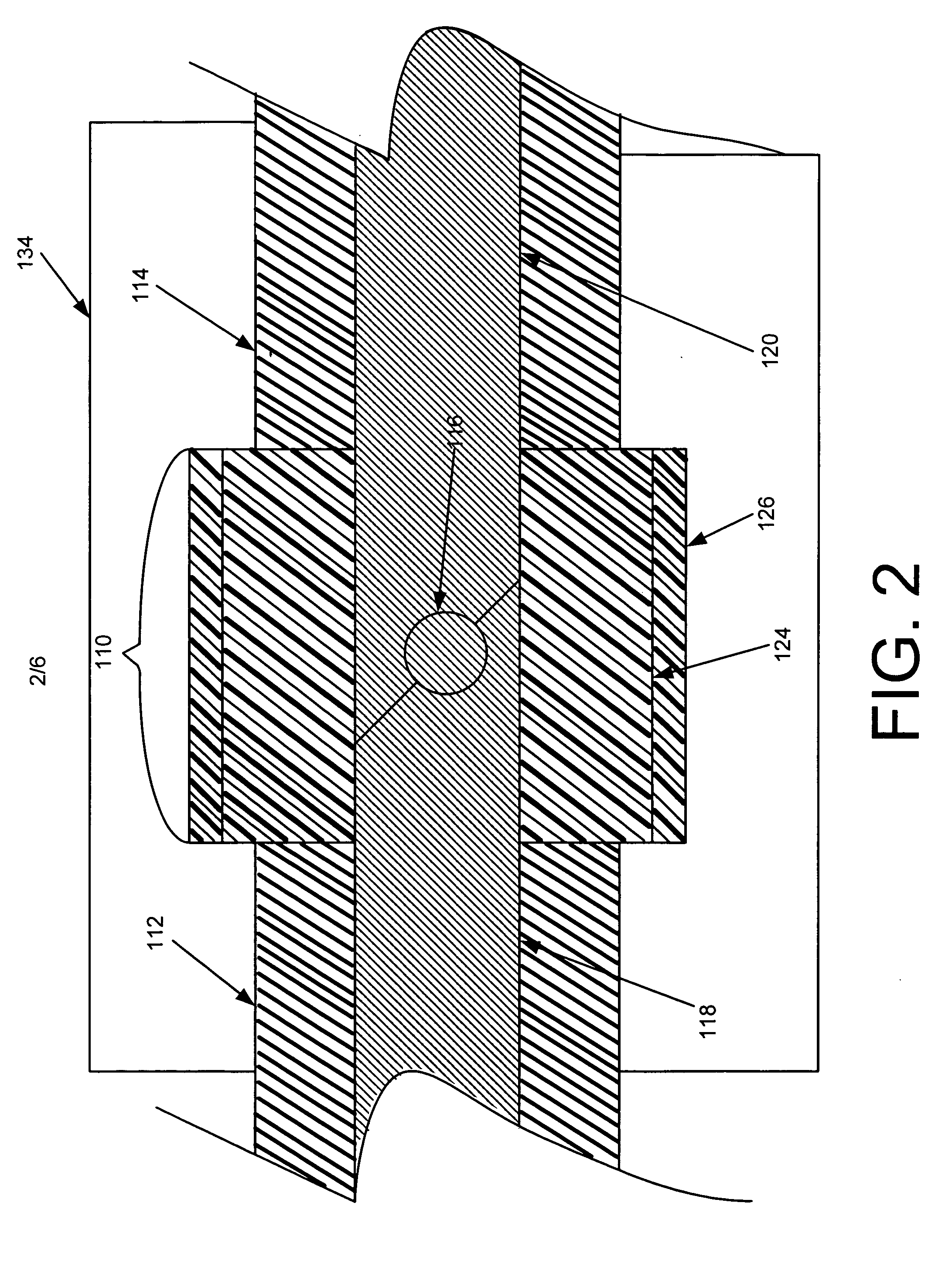Fire resistant electrical cable splice
- Summary
- Abstract
- Description
- Claims
- Application Information
AI Technical Summary
Problems solved by technology
Method used
Image
Examples
Embodiment Construction
[0019]FIG. 1 is a cross-sectional view of two electrical cables 12, 14 connected by a fire resistant electrical cable splice 10, in accordance with a first exemplary embodiment of the invention. The two electrical cables 12, 14 are joined by at least one connection 16. The connection 16 is formed by at least one conductor 18, 20 from each of the electrical cables 12, 14, which are connected mechanically and electrically. An insulating polymer 24 is substantially applied over the connection 16. The insulating polymer 24 should be electrically nonconductive at temperatures consistent with the presence of a fire.
[0020] It is anticipated that the electrical cables 12, 14 will be fire resistant electrical cables, although the fire resistant electrical cable splice 10 may be used for other types of electrical cables. If fire resistant, the electrical cables 12, 14, for instance, may be mineral insulated electrical cables, polymeric ceramifiable electrical cables, or other fire-rated elec...
PUM
 Login to view more
Login to view more Abstract
Description
Claims
Application Information
 Login to view more
Login to view more - R&D Engineer
- R&D Manager
- IP Professional
- Industry Leading Data Capabilities
- Powerful AI technology
- Patent DNA Extraction
Browse by: Latest US Patents, China's latest patents, Technical Efficacy Thesaurus, Application Domain, Technology Topic.
© 2024 PatSnap. All rights reserved.Legal|Privacy policy|Modern Slavery Act Transparency Statement|Sitemap



